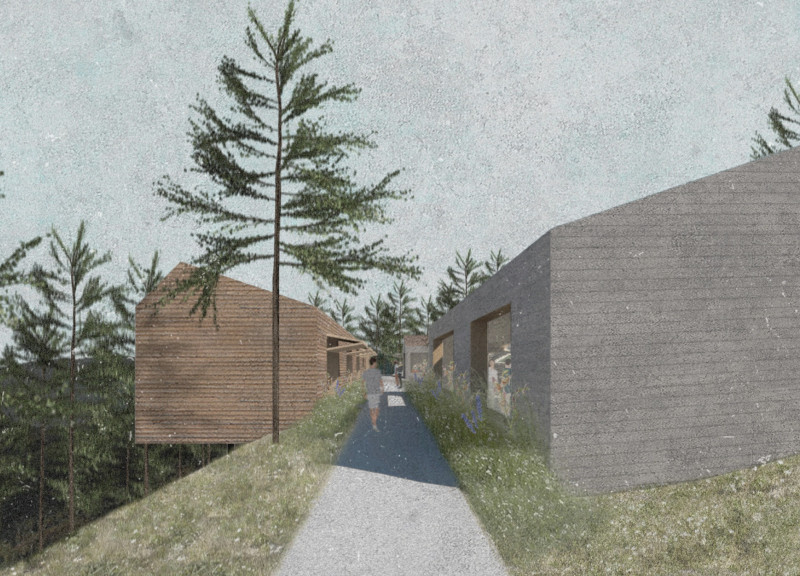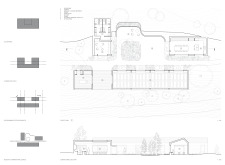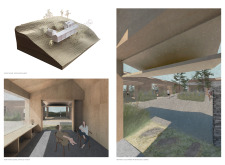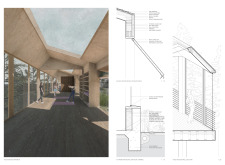5 key facts about this project
The project "Vinyasa," located in Vale de Moses, showcases a thoughtful approach to wellness and nature. Its design integrates a series of single-story buildings, arranged to foster a sense of awareness among users. The overall concept highlights the importance of engagement with the surroundings, encouraging individuals to explore both the indoor spaces and the natural landscape.
Spatial Organization
The layout consists of a pinwheel configuration, with structures centered around a courtyard. This arrangement facilitates movement and interaction while keeping a visual connection among the buildings. Two of the structures are built with board-formed concrete and are partially buried in the hillside. This design choice lessens their visual impact on the site and allows the buildings to blend into the natural scenery.
Structural Highlights
A long yoga/healing volume extends from the hillside, offering views of the surrounding pine trees. This layout enhances the connection to nature, allowing users to feel immersed in the tranquil environment. The elongated shape of the structure accommodates various wellness activities, making it a central element of the overall design.
Sustainable Practices
Sustainability is a key focus of the project, evident in the choice of materials and design strategies. Board-formed concrete and pine cladding form a cohesive look while also supporting eco-friendly goals. A central retention pond and ample gardening areas integrate into the site, helping to promote biodiversity and ecological balance. These elements aid in cooling the buildings passively, aligning with the project's environmental objectives.
Adaptability of Space
Flexibility is important in the design, as operable doors and partitions allow spaces to change based on the needs of users. This adaptability makes it possible for the spaces to host a variety of activities. From yoga sessions to communal events, the environment can shift to accommodate different functions, enhancing the overall user experience.
Wild vegetation grows around and between the buildings, softening the architecture's clean lines and creating a natural connection with the landscape. This design detail enriches the experience for people using the space while nurturing local biodiversity.






















































